Monday Morning Update 4/21/14
Top News

UPMC (PA) says that the information of 27,000 of its employees was exposed in a February breach and the hackers have filed fraudulent tax returns for 788 of them so far. A lawyer seeking class action status of his lawsuit asks the obvious question: why did the breach involve only 27,000 of UPMC’s 62,000 employees? The attorney points out that UPMC first claimed that only 20 employees were affected, then 322, and now 27,000, obviously concluding that all employees may be at risk despite the announcement. The tax scam is a smart one since the IRS, like HHS, pays first and asks questions later.
Reader Comments
From Weary CIO: “Re: branding. I have background in market research and healthcare IT branding is useless. It works in retail, so marketers in vendor companies use it to have something to do. They come up with thin and useless stuff like logos on napkins because if they don’t, they are out of a job. If marketing is what you do, that’s what you do. Private industry is more acutely aware that overhead positions are more vulnerable to reductions so they have to try to stay relevant. Waste creates so many employment opportunities!” I had questioned offline to Weary CIO the value of expensive signage and “branded” items at events when I rarely notice them. My enjoyment of HIStalkapalooza was unaffected logos on lampshades.
From Down Boy: “Re: athenahealth. Down Friday – all sites, communications, interfaces, etc. Confirmed with hospitals and practices in CA, MO, SD, NH, and ME.” Unverified.
From Locked Box: “Re: athenahealth. Their ‘More Disruption Please’ program was supposed to be a collection of companies offering easily integrated products that would give athena customers functionality the company doesn’t offer, which would support innovation by giving those companies access to customers. In return, the companies would offer a discount to their customers, lowering the barrier to innovation. Now athenahealth has changed the program to a revenue share model, which is a 20 percent tax on interoperability for us and our customers, which is why we joined. We are leaving the MDP program.”

From Excelsior: “Re: JASON report. HHS’s report is similar to the 2010 PCAST report, including calls to represent health information as ‘atomic data with associated metadata.’ Two people involved in the PCAST report were also involved in the JASON report: Craig Mundie and Sean Nolan, both of Microsoft.” The report says “the entire health data infrastructure will be crippled” without better interoperability and recommends that EHR information be stored using common mark-up language and that EHR vendors should open up their systems via APIs that allow third parties to build on them with new applications. EHR vendors aren’t likely to embrace this concept enthusiastically given that the report recommends architecture that can “provide a migration pathway from legacy EHR systems,” but of course their EHR customers would need to apply pressure on their vendors to make it happen anyway since government reports have zero bottom line impact. Other findings:
- Meaningful Use criteria “fall short of achieving meaningful use in any practical sense,” mostly having replaced faxed machines with electronic delivery of page-formatted records that patients can’t access directly.
- Current EHR interoperability work hasn’t developed opportunities for entrepreneurism.
- HHS could take an active role by using future Meaningful Use stages, starting with Stage 3, and certification to force an open software architecture. ONC should publish standards to accomplish that within one year.
- Researchers need better access to EHR data.
- Meaningful Use Stage 3 should require vendors to develop, publish, and verify APIs that allow searching their systems with semantic harmonization and vocabulary translation. System acquisitions by the VA and DoD should require those published APIs.
- EHR-powered fraud detection tools should be developed.
From Guillermo del Grande: “Re: consultants. Here’s a list of ‘Things Consultants Wish Their Customers Knew.’”
- Very few consulting companies have a bench.
- If you post a position with six different vendors, a consultant with a resume on Dice will receive six different calls.
- If you yell at a consultant for looking at Facebook, chances are that’s why you need a consultant in the first place.
- Trying to find someone with seven years of experience in an application that’s only been around for five years probably won’t end well.
- If people can’t manage in the operations side, what the hell does putting them into the IT department going to accomplish?
- Recruiting firms are really good at making phone calls and searching job boards. This is pretty much it. Many consulting firms are actually recruiting firms.
- If you are going to be managing consultants, please do not panic when they know more than you about the application that you scraped through getting a certification in, and then ignored for several months before deciding you needed to augment your staff.
- If you want the FTE to learn from the consultant, you may want to see if the FTE has a pulse and an IQ.
- If you fire four consultants in a row, chances are that it’s not them, it’s you.
- Two hiring managers with a feud fighting through hiring consultants and making them mess with each other is annoying, expensive, and somewhat common.
- Yes, consultants have faults. Thank you for pointing them out every morning. Why did all your FTEs leave again?
HIStalk Announcements and Requests

The White House is most responsible for the ACA-related failures such as Healthcare.gov that led HHS Secretary Kathleen Sebelius to resign, according to 47 percent of poll respondents. New poll to your right: do you feel better or worse about HHS after its release of Medicare physician payment information? I felt worse: the lawsuit-mandated release of the data reminded that like pretty much all federal programs, taxpayers should be appalled at how their money is being spent, the cost of the self-protecting bureaucracy required to spend it, and the remarkably breezy oversight that expensive bureaucracy provides in return. Not to mention that Medicare payment rules are so convoluted that even they can’t figure out when they (meaning we) are being defrauded. HHS is like the IRS in that regard and I don’t trust either of them to enforce politics-embedded rules that nobody understands.
Listening: new from Atlanta-based melodic hard rockers Manchester Orchestra.
Upcoming Webinars
May 1 (Thursday) 1:00 p.m. ET. Think Beyond EDW: Using Your Data to Transform, Part 2 – Build-Measure-Learn to Get Value from Healthcare Data. Sponsored by Premier. Presenters: Alejandro Reti, MD, senior director of population health, Premier; and Alex Easton, senior director of enterprise solutions, Premier. Once you deploy an enterprise data warehouse, you need to arrive at value as quickly as possible. Learn ways to be operationally and technically agile with integrated data, including strategies for improving population health.
Acquisitions, Funding, Business, and Stock

From the athenahealth earnings call:
- The Epocrates team “continued to struggle on new booking attainment” and missed revenue targets with an eight percent reduction since the acquisition. The company is looking for a VP of sales.
- The company started using the Net Promoter Score and fell short of its goal with a 44.7 vs. planned 47.3 (vs. a high 70s score for Amazon and Apple.)
- The company urged investors to look at full-year results instead of quarterly.
- In admitting that athenaCoordinator’s planned “one percent of system revenue” model was not followed in its first two sales, Jonathan Bush said that the company was desperate to get those sales and had no references for the prospects. The plan remains to collect a percentage of health system collections.
- The company blamed an increase in its AR days to health plan deductible resets, slower patient payments, vacation days, bad weather, and a weaker flu season.
- Low-margin real estate investments hurt gross margin.
- Bush says an obstacle to the company’s growth is that consulting companies can’t earn fees from its implementation, so it will be “repositioning ourselves around the larger process improvement for the health system around coordination and care that actually will generate very productive, useful as oppose to wasteful consulting fee in the interest of the consulting firms.”

Here’s a one-year view of ATHN’s share price (blue) vs. the Nasdaq (red).
Healthbox, which runs medical accelerator programs, raises $7 million in expansion funds. One of its investors is Intermountain Healthcare. The company also announces that it will launch Healthbox Solutions to showcase healthcare IT products to hospitals.
Government and Politics

A ProPublica analysis of the CMS physician payments database finds that doctors previously charged with fraud and Medicare overbilling continue to make big money from the program. Medicare paid a psychiatrist who was arrested and barred from the Medicaid program in 2011 $862,000 in 2012. Sen. Chuck Grassley (R-IA) said Medicare and Medicaid programs need to communicate since, “The new transparency makes it harder to ignore when doctors who harm patients or defraud taxpayers in one program face no consequences in the other program” (how about a little bit of interoperability push there?) A doctor who was convicted of paying patients via his charity to use his pain clinic was paid $500,000 in 2012 for treating 80 patients despite his pending 50-month prison sentence and $3.5 million fine, but his lawyer claims his conduct didn’t cost Medicare anything because somebody would have treated the patients even if it wasn’t him. A Michigan oncologist charged with misdiagnosing patients with cancer so he could bill them for unnecessary treatments was paid $10 million by Medicare in 2012. Pay-and-chase is working really well for criminals.
Innovation and Research

The consumer wearables fad seems to be over as Nike fires 55 of the 70 members of its FuelBand team and cancels the planned fall release of a new model. Nike says it wants to focus on software, not hardware. Most likely they realized that (a) high-tech versions of a $5 pedometer not only don’t usually motivate anyone except those who are already motivated, and (b) spending money to bring out new hardware versions is risky now that the competitive field has opened up. FeulBands may die off just as quickly as those once-ubiquitous yellow Livestrong wristbands that people couldn’t trash fast enough once the headlines forced them to belatedly realized what a scumbag Lance Armstrong is. There’s a Nike connection there too – they used to make Livestrong-branded products until Lance finally admitted that he’s a cheater and a liar.
Technology
John Gomez from Sensato provides suggestions on dealing with the Heartbleed SSL vulnerability, warning that hospitals “have an obligation to deal with it because it is a serious threat to privacy.” Even Healthcare.gov is telling users to change their passwords. John’s suggestions:
- Inventory systems that use SSL or similar encryption.
- Ask technology partners providing services through an information or hosting agreement (HIE, hosting companies, portal vendors, kiosk vendors) for certification that they have determined that they are not vulnerable to Heartbleed.
- Ask HIPAA business associates to provide documentation of how they have eliminated their Heartbleed risk, especially companies who use online system to collect patient payments for billing or collections.
Other

T. J. Samson Community Hospital (KY) announces that 49 employees will be laid off and all employees will temporarily have their pay reduced due to effects of the Affordable Care Act and “the costly rollout of an inadequate software program.” That system is Siemens Soarian, which the hospital purchased in February 2012. Interim CEO Henry Royse says that Soarian “is still costing the hospital tens of millions of dollars in unrecoverable bad debt, consultant fees, and lost productivity” a year after it went live. He specifically says the implementation was rushed, Soarian can’t connect to its practice management systems, it can’t produce needed operational reports, and the hospital has been unable to send bills for 60-90 days at times. The hospital implemented Soarian to earn Meaningful Use payments.
Fast Company profiles SharePractice, which it describes as “a Yelp for medical treatments” in allowing physicians to review the success peers have had with specific treatments. The company calls its iPhone app “experience-based medicine.” The founder is a Naturopathic Doctor who works for San Francisco-based Care Practice, opened “like one would open a neighborhood restaurant with a focus on patient experience and developing a compelling identity and brand in a tough urban marketplace with fewer and fewer doctors.”

The outpatient clinics of Salem Health (OR) will begin their pilot with OpenNotes on Monday.
The CEO and CTO of Mississippi-based Samarion Solutions, which sold long-term care IT systems, are indicted for defrauding investors.
A study finds that US healthcare isn’t expensive because we use so much of it – the problem is that we pay the highest prices in the world for drugs and hospital procedures. As patients, it’s not altogether our fault that US healthcare is so expensive and produces unimpressive results for the impressive outlays. A day in the hospital costs less than $500 in Spain, $1,300 in Australia, and $4,300 here (and $13,000 for hospitals in the 95th percentile.)
A New York Post article names the highest-paid doctors in New York City, with two from Mount Sinai Hospital’s medical school topping the list: a urologist paid $7.6 million and a spine surgeon who made $6.9 million. The medical director of Consumer Reports Health summarized, “Whenever I see compensation data in health care, I’m stunned and nauseated. I’m embarrassed for the profession.”
In England, a review of a woman’s death after inpatient surgery finds that she was screaming and vomiting in her room afterward, even begging her children to call an ambulance to remove her from the hospital. Her doctor did not respond, the investigation found, because he was in the hall outside her room playing a video game.
Contacts
Mr. H, Inga, Dr. Jayne, Dr. Gregg, Lt. Dan, Dr. Travis, Lorre.
More news: HIStalk Practice, HIStalk Connect.

















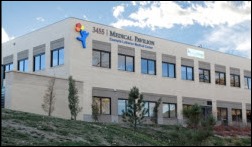

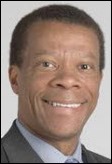



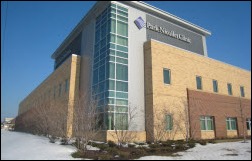

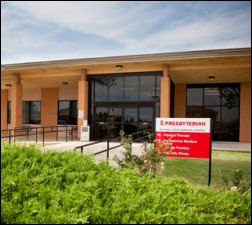































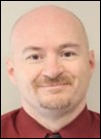

















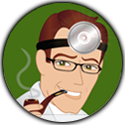



Anything related to defense will need to go to Genesis.